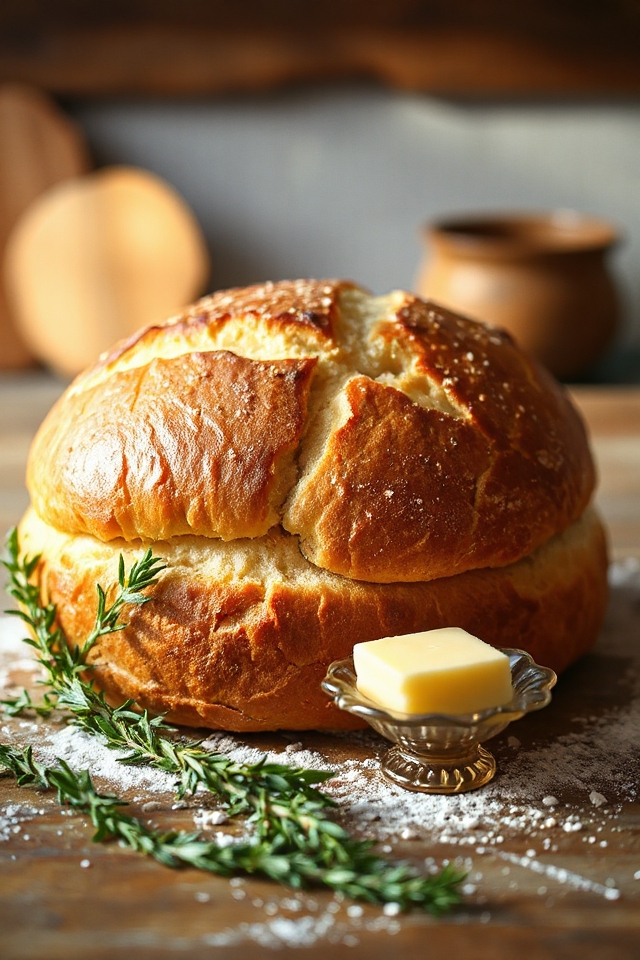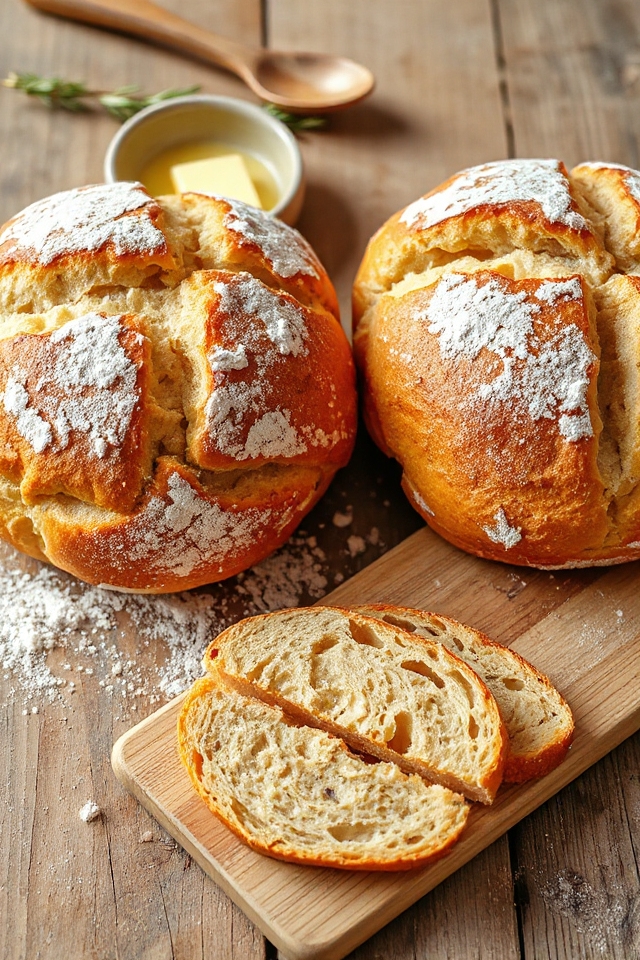Why You’ll Love This Peasant Bread Recipe
Why will you love this peasant bread recipe? It’s incredibly simple yet yields a delightful loaf that’s perfect for any meal.
The aroma that fills your kitchen while it bakes is simply irresistible! I adore how the crust turns golden and crisp, while the inside remains warm and soft.
You don’t need fancy equipment or ingredients, just a bit of patience. Plus, the satisfaction of making bread from scratch is unmatched.
Whether you’re slathering it with butter or using it for sandwiches, this bread is versatile and comforting.
Trust me, once you try it, you’ll keep coming back for more!
Ingredients of Peasant Bread
When it comes to baking, especially bread, having the right ingredients is key to achieving that perfect loaf. Peasant bread is one of those recipes that requires very few ingredients but delivers a ton of flavor and satisfaction. It’s rustic, wholesome, and quite forgiving, making it ideal for bakers of all levels.
So, let’s explore what you’ll need to whip up this delightful bread in your own kitchen.
Here’s a list of the ingredients for making peasant bread:
- 3 cups all-purpose flour
- 1 cup graham flour
- 2 teaspoons kosher salt
- 2 cups lukewarm water
- 1 tablespoon coconut sugar
- 2 teaspoons active dry yeast
- 2 tablespoons butter (at room temperature)
Now, while the list might seem straightforward, each ingredient plays an essential role. For instance, the all-purpose flour gives structure, while the graham flour adds a nutty flavor and a bit of texture.
You might be wondering, “What’s up with the coconut sugar?” Well, it’s there to give a touch of sweetness, but you could easily swap it for regular sugar if you prefer.
Just remember, the water should be lukewarm—too hot and you risk killing the yeast. And let’s be real, we don’t want to put in all that work just to have our yeast throw a tantrum.
How to Make Peasant Bread

Making peasant bread is a delightful adventure in the kitchen, and trust me, it’s easier than you might think. First off, you’ll start with 3 cups of all-purpose flour and 1 cup of graham flour, which gives this bread a lovely, hearty texture. In a mixing bowl, whisk the flours together with 2 teaspoons of kosher salt. Set this aside while you get your wet ingredients ready.
Now, grab a separate bowl and grease it with 2 tablespoons of butter—just enough to make it shiny and ready for the dough’s initial rise.
Now, let’s get to the magic of yeast. In your standing mixer (or a bowl if you want to go old-school with a wooden spoon), combine 2 cups of lukewarm water with 1 tablespoon of coconut sugar. Sprinkle 2 teaspoons of active dry yeast on top and let it hang out for a moment. If you want to be extra sure your yeast is alive and kicking, you can wait about 10-15 minutes until it gets all foamy. But, honestly, I usually skip this step and dive right in.
Then, mix in your flour and salt combo until it all comes together. This dough is going to be a bit sticky, which is totally normal, so don’t panic. Use a dough hook if you have one, and let it mix for about 4-5 minutes on medium speed.
Once your dough is all mixed up, transfer it to that greased bowl you set aside earlier. Cover it with a towel or some plastic wrap, and now it’s time for the dough to rise. This can take anywhere from 1 to 4 hours, so maybe do a little dance or catch up on your favorite show while you wait.
When the dough doubles in size—magic!—punch it down (not too hard, though), and divide it into two equal parts. Shape each half into a ball on a floured countertop and place them in greased oven-safe bowls.
Here’s where I like to take a shortcut: sometimes I let the dough rise overnight in the fridge. It gives the bread a depth of flavor that’s just divine.
When you’re ready, preheat the oven to 425°F, bake for 10 minutes, then drop the temp to 375°F for another 18-19 minutes. Let it cool for a bit before enjoying the fruits of your labor. Your kitchen is about to smell incredible.
Peasant Bread Substitutions & Variations
Although traditional peasant bread is delicious on its own, experimenting with substitutions and variations can lead to exciting new flavors and textures.
I often swap out all-purpose flour for whole wheat or spelt flour for a nuttier taste and added nutrition. For a delightful twist, I’ll add herbs like rosemary or thyme directly into the dough.
Want it sweeter? Incorporating honey or maple syrup instead of coconut sugar works wonders. You could even mix in seeds or nuts for crunch.
Don’t forget about adding cheese or olives for a savory kick. These simple changes make each loaf uniquely yours!
Additional Tips & Notes
To guarantee your peasant bread turns out perfectly every time, I recommend paying close attention to the dough’s consistency. If it feels too sticky, don’t hesitate to add a bit more flour.
When shaping the dough, work quickly to maintain its structure. Also, remember that a longer, slower rise can enhance flavor, so refrigerating overnight is a great option.
Keep an eye on your baking time—if you prefer a softer crust, take it out sooner. Finally, let the loaves cool completely before slicing; this helps with texture.
Trust me, these tips will elevate your peasant bread experience!
